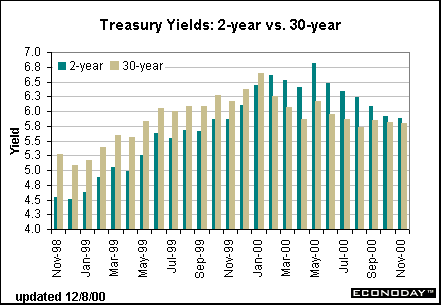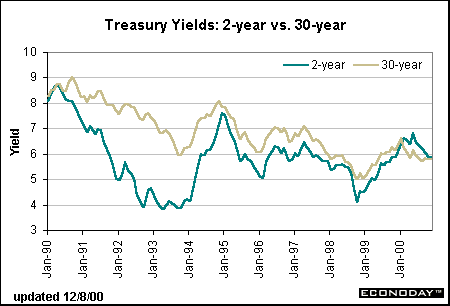Financial turmoil in Russia led to problems in the hedge fund market and created a flight to quality in the second half of 1998. As a result, Treasury yields fell sharply. It took nearly a year to get yields back to levels we saw in early 1998. Spreads narrowed in late 1999. In February, the yield on the 30-year bond fell below the yield on the 2-year note since the Treasury announced its plan to reduce the supply of 30-year bonds going forward. The yield on the 2-year note decreased for the sixth straight month in November, but the yield on the 30-year bond remained unchanged.
Long Term Perspective
Pool of Available Labor • Nonfarm Productivity • Treasury Yields • Stock Prices • Humphrey-Hawkins Actions |
|||

